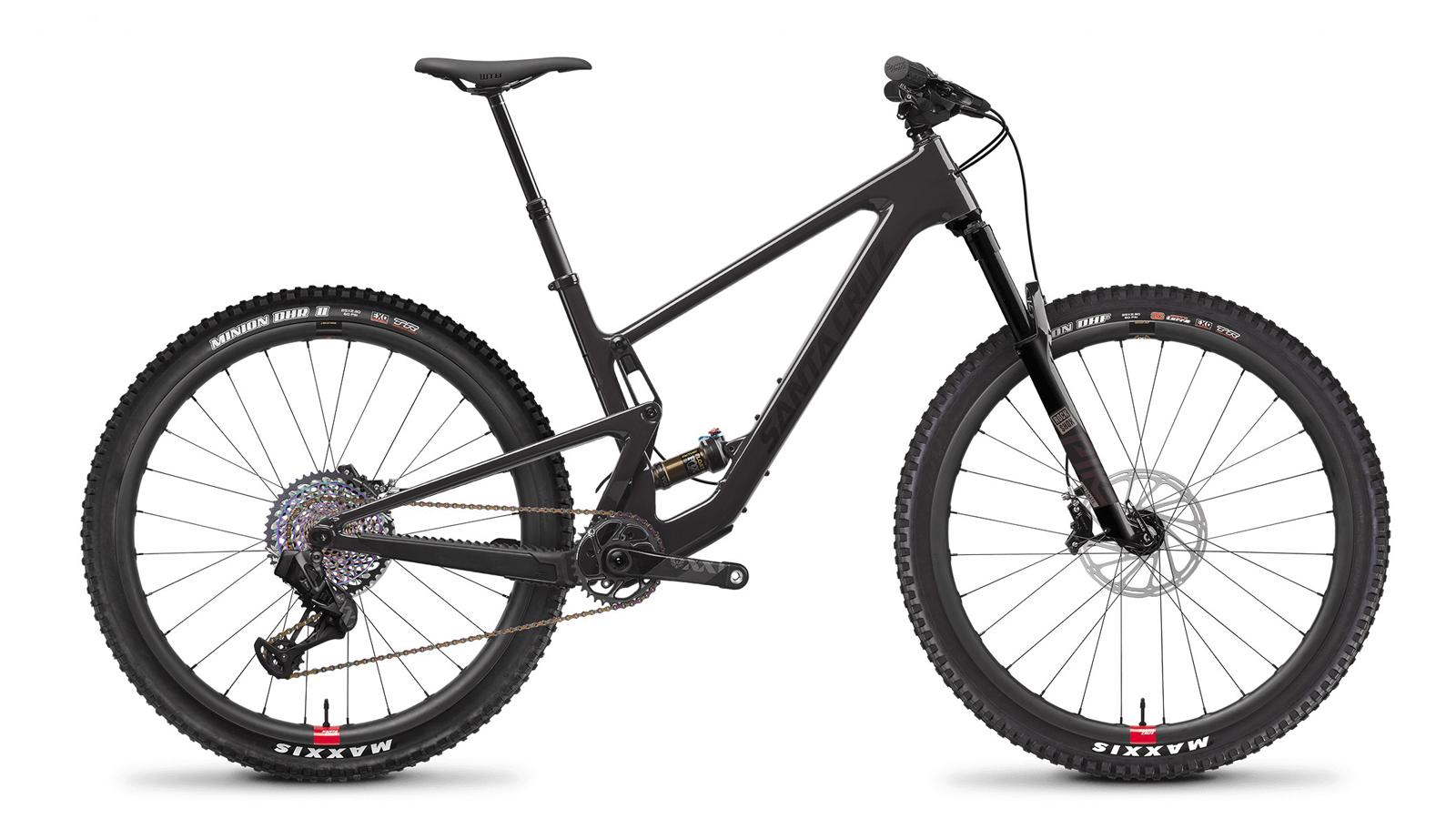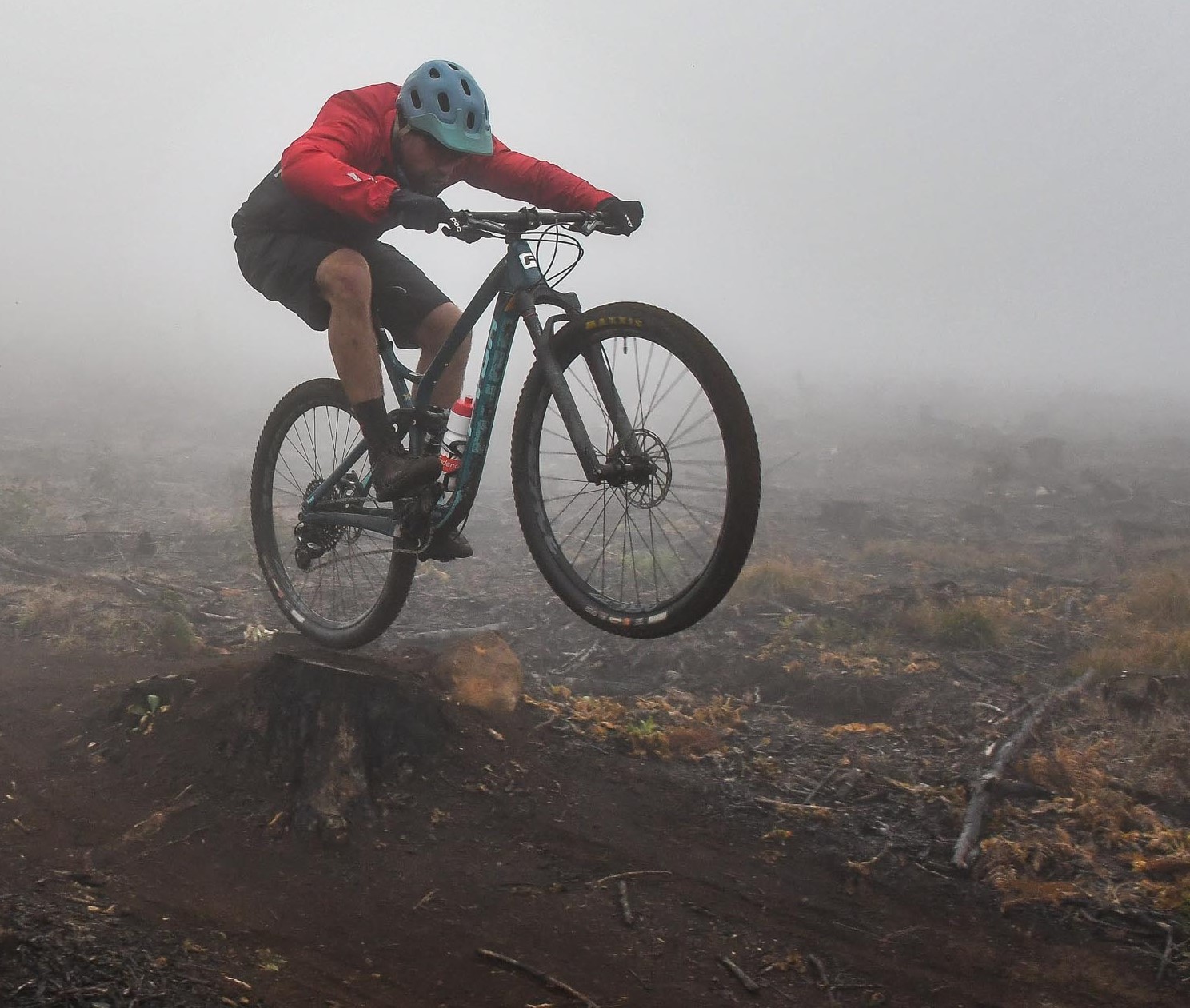Mountain bike geometry: what is long, slack and low?
Mountain bike geometry and trying to separate fact from fashion

Geometry. I was so terrifically awful at maths, that my answers during high-school exams were mostly clueless instead of Euclid.
The haunting of such abject failure, at every geometry exam, returns at the most inappropriate of times. Like when I am marvelling at that new carbon-fibre frame on the local bike shop display wall. But it does. For me. Troubling so.
I look at bikes in 2019, beset with doubt. Untouched frames on display. Frames with bits on them, sans wheels, being serviced in workshops. Complete bikes, delightfully trail baptised with dirt. And all I can think is: are they long enough? Are they low enough? Are they slack enough?
Long. Slack. Low. These are the keywords accompanying each new bike release. With the enthusiasm amongst marketing people for long-slack-low (LSL) characteristics, we could all in future (possibly) be riding a frame size smaller.

Geometry cannot be a guesstimate
The principles anchoring LSL, as an industrial design trend, I understand. Long/Slack/Low. It corresponds to greater stability; benevolent anti-OTB descending attributes and better cornering agility. What I don't understand, are the actual numbers. If you are lionising a geometry trend, evidence should be tabled, with exact numbers.
Without a set of reference numbers arguing a standard, it becomes a tragic case of philosophical sophistry: the sky can never be similarly blue for both of us. Your LSL will not be my LSL.
Few industries are at once as conservative and reactive as the one we pour most of our disposal income into. Requests to alter geometry by half a degree are answered in a glacial time scale by product managers.
It's this neurosis of the mountain bike industry, deafness to certain demands, in concert with oversupply in wheel size variation, that clicks my circumspection into a 12th gear of suspicion with all this LSL double-speak. For the last five years, the wheel size upheaval has overshadowed geometry. Not anymore.
LSL is mentioned with painfully obvious regularity each time a new mountain bike is launched. Problematically, LSL geometry also isn't really all that new.
Mountain bikes might not be as mature an industrial design as their thinner tubed, rigid, road racing brethren – but after four decades of development we're not quite entering a fourth dimension of design with LSL. You should be oblivious to what the big or boutique brands are hashtagging.
If we all agree the first built-to-purpose mountain bikes were Joe Breeze's nickel plated Breezers, which raced downhill at Repack and also rolled as Californian off-road touring bikes, there’s a geometry departure point to judge contemporary claims of LSL. Joe's 1977 design, rigid thought it was, had a 67.5-degree head angle – a potentially startling number.
An aggregate 2019 trail bike draws a head angle very close to that of Joe’s 1977 Breezer. The current Specialized S-Works Stumpjumper is only a degree slacker, at 66.5. What is slack, then, really? Greg Minnaar refuses to ride anything slacker than 63-degrees, because it doesn’t steer – and if he can’t get the front wheel working past a specific head angle value, nobody can.
Should the slack reference number not perhaps be a comfortable golden mean, between the ultimate technical terrain two-wheeled pedal machine, Greg’s Santa Cruz downhill racing bike, and Joe Breeze’s original intuition? That number would be 65-and-a-quarter degrees.
And it would appear that 65-and-bit is where the industry is heading. Santa Cruz’s new Tallboy, a true quiver-killer of an all-round bike, registers a 65.7-degree head angle.

In the middle
What is long? Well, you could have Geometron long. The German-crafted enduro buses of former suspension tuner and bike industry outlier, Chris Porter. A tall man on a crusade to build bikes with axles spaced far enough apart, that its wheels nearly rotate in different time-zones, these Geometrons place the rider in a position that is very much the middle.
Porter’s large Geometron has a 1323mm wheelbase – and you can go two sizes bigger if you wish. If the 1978 Breezer had an 1130mm wheelbase, and Porter’s mid-sized Geometron spaces 1324mm, the equivalent long geometry compromise should be 1226.5mm.
Low. It’s number that bothers me most about the LSL trend. Dual-suspension bikes sag into their travel, so comparing one of them to the original mountain biking Breezer #1 is disingenuous. Although the entire scope of my LSL investigation is part mountain biking revisionism, part numerology.
A substitute, then. Let us rather compare the original mountain bike’s lowness with a modern enduro-category hardtail. Something boutique, built to roll on Vancouver’s North Shore, the proving ground for technical forest riding.
That bike is Chromag’s Stylus – with a BB height of 328mm. This is quite a bit higher than Joe Breeze’s original idea of 304.8mm. We should account for the growth in 26-inch tyre profile over time, though, when comparing these bikes. But Uncle Joe, it would appear, knew about ‘low’ all those years ago.
Harvesting data from the extremes and history of frame design, the numbers that should possible anchor the LSL trend could be 65.5-degrees up front, 1226.5mm between the axles and about 316mm of ground clearance.
The founders of mountain biking had most of our ideal geometry figured out forty years ago, when they built those first frames – without any influence by their own riding experience. We’ve merely gone in a full geometry circle with dual-suspension frames, to rediscover that.

Lance Branquinho is a Namibian-born journalist who graduated to mountain biking after injuries curtailed his trail running. He has a weakness for British steel hardtails, especially those which only run a single gear. As well as Bike Perfect, Lance has written for MBR.com, Off-Road.cc and Cycling News.
